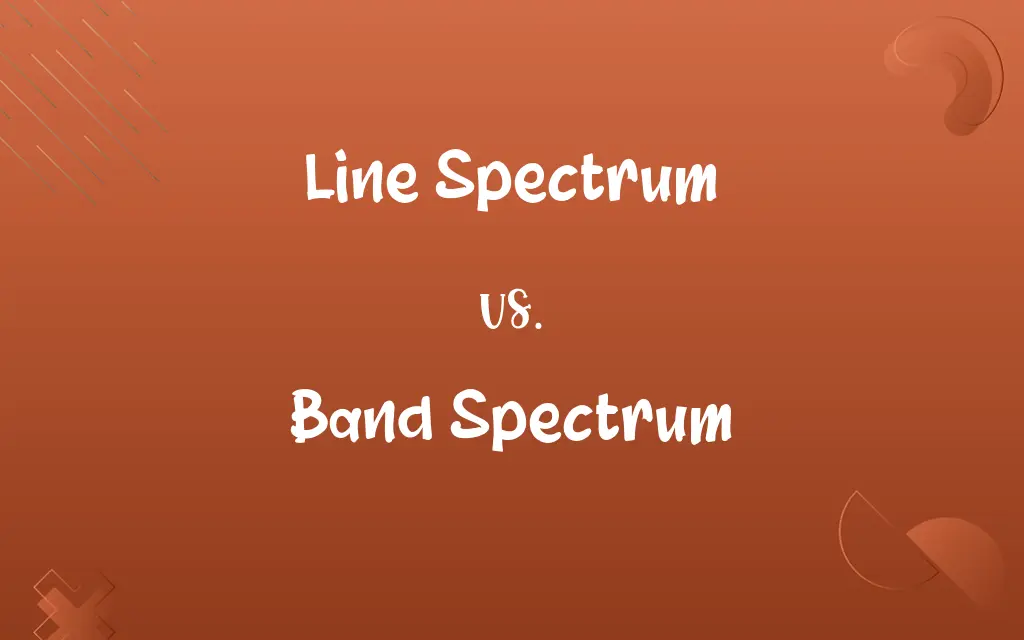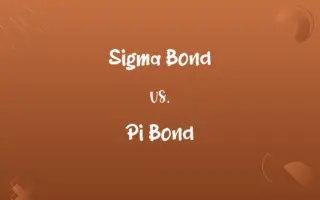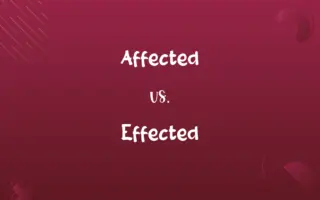Line Spectrum vs. Band Spectrum: Know the Difference

By Shumaila Saeed || Updated on December 25, 2023
Line Spectrum displays distinct, narrow lines representing specific wavelengths, typical of atoms; Band Spectrum shows broader bands, common in molecules due to rotational and vibrational energies.

Key Differences
A Line Spectrum consists of discrete, sharp lines, each representing a specific wavelength emitted or absorbed by atoms. Conversely, a Band Spectrum comprises a series of closely spaced lines forming broad bands, indicative of molecular transitions.
Shumaila Saeed
Dec 11, 2023
In a Line Spectrum, each line corresponds to a quantum transition between energy levels in an atom. In a Band Spectrum, the bands result from combined rotational and vibrational energy changes in molecules.
Shumaila Saeed
Dec 11, 2023
Line Spectra are characteristic of elements in a gaseous state, revealing unique atomic fingerprints. Band Spectra, however, represent molecular species and are more complex due to overlapping rotational and vibrational transitions.
Shumaila Saeed
Dec 11, 2023
The simplicity of Line Spectra makes them crucial for identifying elements in stars and distant galaxies. Band Spectra, with their complex patterns, are essential for understanding molecular structure and bonding.
Shumaila Saeed
Dec 11, 2023
In emission Line Spectra, each line represents energy emitted when an electron transitions to a lower energy state. In absorption Band Spectra, the broad bands signify energy absorbed as molecules transition to higher vibrational and rotational states.
Shumaila Saeed
Dec 11, 2023
ADVERTISEMENT
Comparison Chart
Origin
Quantum transitions in atoms
Rotational and vibrational transitions in molecules
Shumaila Saeed
Dec 11, 2023
Complexity
Relatively simple, each line is distinct
More complex, with overlapping lines forming bands
Shumaila Saeed
Dec 11, 2023
Applications
Identifying elements, astronomical analysis
Understanding molecular structure, chemical analysis
Shumaila Saeed
Dec 11, 2023
ADVERTISEMENT
Line Spectrum and Band Spectrum Definitions
Line Spectrum
A spectrum showing distinct lines, each representing a specific wavelength.
The hydrogen atom's Line Spectrum is visible in its unique emission lines.
Shumaila Saeed
Dec 01, 2023
Band Spectrum
Indicates the presence of molecules rather than individual atoms.
The Band Spectrum analysis helps in identifying molecular gases in the atmosphere.
Shumaila Saeed
Dec 01, 2023
Line Spectrum
Characteristic of pure elements in a gaseous state.
We identified helium by its distinct Line Spectrum in the lab experiment.
Shumaila Saeed
Dec 01, 2023
Band Spectrum
More complex than line spectra, reflecting molecular structure intricacies.
Studying the Band Spectrum of a molecule reveals details about its bonding and shape.
Shumaila Saeed
Dec 01, 2023
Line Spectrum
Useful in identifying elements and analyzing their atomic structure.
Astronomers use the Line Spectrum to determine the composition of stars.
Shumaila Saeed
Dec 01, 2023
ADVERTISEMENT
Band Spectrum
Seen in both emission and absorption, related to energy states in molecules.
The absorption Band Spectrum of ozone is crucial for understanding UV radiation absorption.
Shumaila Saeed
Dec 01, 2023
Line Spectrum
Results from electron transitions between discrete energy levels in atoms.
Each line in the sodium Line Spectrum corresponds to a specific electron transition.
Shumaila Saeed
Dec 01, 2023
Band Spectrum
A spectrum consisting of broad bands due to overlapping spectral lines.
The carbon dioxide Band Spectrum is complex due to its molecular vibrations.
Shumaila Saeed
Dec 01, 2023
Line Spectrum
Appears in both emission and absorption forms, depending on energy changes.
The sun's absorption Line Spectrum reveals the elements present in its atmosphere.
Shumaila Saeed
Dec 01, 2023
Band Spectrum
Arises from combined rotational and vibrational transitions in molecules.
In the infrared region, the Band Spectrum of water vapor is clearly visible.
Shumaila Saeed
Dec 01, 2023
Repeatedly Asked Queries
What is a Line Spectrum?
It's a spectrum showing distinct, sharp lines, each indicating a specific wavelength.
Shumaila Saeed
Dec 11, 2023
What causes a Band Spectrum?
It's caused by combined rotational and vibrational energy transitions in molecules.
Shumaila Saeed
Dec 11, 2023
What's the difference in complexity between the two spectra?
Line Spectra are simpler with distinct lines, while Band Spectra are more complex.
Shumaila Saeed
Dec 11, 2023
What does a Band Spectrum indicate?
The presence of molecules and their structural information.
Shumaila Saeed
Dec 11, 2023
Is Band Spectrum useful in chemistry?
Yes, for understanding molecular structures and chemical bonding.
Shumaila Saeed
Dec 11, 2023
Where is Line Spectrum commonly observed?
In pure elements, especially in their gaseous state.
Shumaila Saeed
Dec 11, 2023
How is a Line Spectrum formed?
By electron transitions between discrete energy levels in atoms.
Shumaila Saeed
Dec 11, 2023
Is Line Spectrum observed in absorption or emission?
It can be observed in both, depending on the energy changes involved.
Shumaila Saeed
Dec 11, 2023
What is a Band Spectrum?
A Band Spectrum consists of broad bands formed by overlapping spectral lines.
Shumaila Saeed
Dec 11, 2023
Can Line Spectrum be used to identify elements?
Yes, it's a key tool in elemental identification and analysis.
Shumaila Saeed
Dec 11, 2023
How do astronomers use Line Spectra?
For determining the elemental composition of celestial objects.
Shumaila Saeed
Dec 11, 2023
Can Band Spectrum indicate chemical compounds?
Yes, it can reveal specific molecular compounds and their interactions.
Shumaila Saeed
Dec 11, 2023
What information does Band Spectrum provide in molecular studies?
It offers insights into molecular structure, bonding, and energy states.
Shumaila Saeed
Dec 11, 2023
Are rotational transitions seen in Band Spectrum?
Yes, alongside vibrational transitions, contributing to the formation of bands.
Shumaila Saeed
Dec 11, 2023
What role does Band Spectrum play in environmental studies?
It helps in identifying and analyzing atmospheric gases and pollutants.
Shumaila Saeed
Dec 11, 2023
Are Line Spectra seen in stars and galaxies?
Yes, they're crucial in astronomical studies for identifying elemental composition.
Shumaila Saeed
Dec 11, 2023
What type of transitions does a Line Spectrum represent?
Electron transitions between fixed energy levels in an atom.
Shumaila Saeed
Dec 11, 2023
Can Band Spectrum be used in industrial applications?
Yes, in chemical analysis and quality control of substances.
Shumaila Saeed
Dec 11, 2023
Do Line Spectra vary among elements?
Yes, each element has a unique Line Spectrum, like a fingerprint.
Shumaila Saeed
Dec 11, 2023
Why are Line Spectra simpler than Band Spectra?
Because they represent single atom transitions, unlike the complex molecular interactions in Band Spectra.
Shumaila Saeed
Dec 11, 2023
Share this page
Link for your blog / website
HTML
Link to share via messenger
About Author
Written by
Shumaila SaeedShumaila Saeed, an expert content creator with 6 years of experience, specializes in distilling complex topics into easily digestible comparisons, shining a light on the nuances that both inform and educate readers with clarity and accuracy.









































































